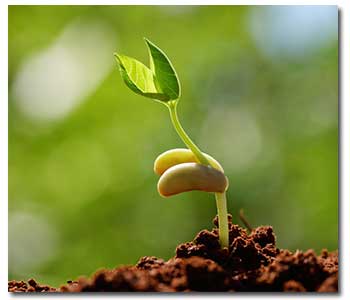How to Make Compost Tea

Compost Tea is a concentrated brew that allows you to take a small amount of compost and extend the benefits much farther than would be possible by just adding that compost to the soil. When making the tea, the nutrients from the compost are leached into the water but, more importantly, so are the beneficial bacteria. Throughout the process, the bacteria multiply tremendously and continue their work of unlocking nutrients. Once the tea is complete, you can cast the brew over a large region of soil, spreading out those precious nutrients and inoculating your soil with these beneficial bacteria species that will continue to increase nutrient availability to plants and contribute to the biodiversity of the soil overall.
Let’s get started
- Take a breathable but durable bag (made of mesh, cheesecloth or something similar) and fill it with compost. You can use finished compost (homemade or storebought), worm castings or even the raw ingredients of compost. Note: You can also have the compost loose in the bucket then strain it out later.
- Place it in a bucket, Rubbermaid tub or other container and fill the bucket with water. Many people want to suspend the bag in the water, like a teabag in a mug. I don’t find this essential but to achieve this, tie the bag to a stick and lay the stick across the top of the bucket or container.
- Once the compost is in place and the bucket is filled with water, mix in some sugar or molasses. This will help to stimulate bacterial growth and jumpstart the process. I recommend adding in just a few tablespoons of sugar (no sugar substitutes).
- The most important aspect is to add aeration in the form of a bubbler of some kind. Most people use an aquarium pump because they are cheap and easy to find. This is absolutely ESSENTIAL to the success of your brew. Your bacteria are aerobic and will not multiply without oxygen; in fact they will die.
- Let your brew sit and bubble for a few days. When it’s foamy and dark, it is ready to use. You can pour it right on the soil as is or dilute it even further. It’s impossible to harm your plants or soil with overapplication but a little goes a long way so you may want to save it and stretch it out. Remember, you can also save it to use as a foliar spray when plants show signs of stress or disease!
Article Coutesy of Steve Goto, Gotomato











